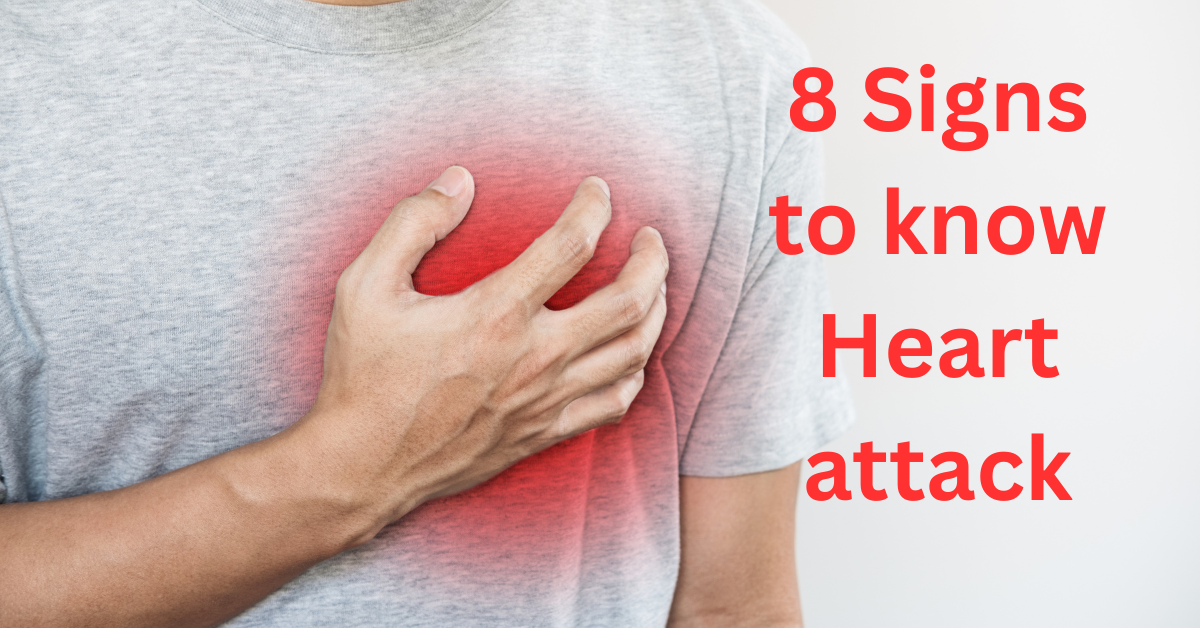Chest pain is a scary situation; it also troubles the patient and everyone around them. Why don’t we know some ways to understand a real emergency and save someone’s life by early diagnosis & treatment, especially in a heart attack, where time runs fast, some medicine can bring a big change. A heart attack is a myocardial infarction [MI] when blood flow decreases or stops in one of the coronary arteries of the heart, causing tissue death of the heart muscle.
What are the 8 signs to know a heart attack or something else?
These are signs that help in knowing red flags and less serious conditions. We usually remember the short form SOCRATES, each alphabet reminds one step to decode the emergency.
What are other causes that can mimic a heart attack?
1 Gastric issues
2 Muscle strain
3 Anxiety or panic attack
4 Peptic ulcer
5. Gallbladder disease (gallstones)
Some other emergencies like Pulmonary embolism, Pneumothorax, pericarditis, etc, can also mimic a heart attack.
SOCRATES
8 signs to understand chest pain are :
Site:
Heart attack pain is typically felt in the centre of the chest or the left side. This central pain is due to the heart’s location and the distribution of nerves around the heart.
Whereas pain in other conditions, for example,
In Gallbladder issues: right upper abdomen or chest.
In Muscle Strain: pain localised to one point and tender on touch.
Onset:
What was the patient doing when the pain started?
Sudden onset is an alarmingly serious condition. In a heart attack, pain starts suddenly, mostly with exertion or stress, but can also start at rest.
In muscle pain or reflux, the pain develops gradually.
Character of pain:
When asked about the character of pain to the patient,
In a heart attack, heavy, tight, squeezing, crushing pain.
In gastric issues, pain is like a hot sensation in the centre of the chest.
In a muscle sprain, localized sharp and stabbing pain.
In anxiety tightness, a dull ache.
Radiation of pain:
Ask about where the pain radiates,
In a heart attack, chest pain may radiate to the left arm, jaw, and back. The reason behind this radiation is the same sensory nerves that carry signals from the chest wall, shoulder, arm, neck, jaw, and back.
In gastric issues, pain may spread to the upper chest or throat.
In gallbladder issues, referred pain will be right upper abdomen to the right shoulder blade.
In a peptic ulcer, referred pain will be in the chest and mid-back.
Association:
Association is the accompanying signs and symptoms that help to rule out underlying conditions.
In a Heart attack, associated symptoms are
- Shortness of breath,
- Sweating cold sweat– a red flag
- Nausea/vomiting is more common in women (especially in the inferior wall MI)
- Palpitation ( feeling a rapid/irregular heartbeat)
Whereas in other conditions, associated symptoms are
GERD / Acid Reflux: Bitter taste, bloating, worsens after eating, and improves with antacids.
Panic Attack Fear, fast breathing, tingling in fingers, chest tightness. Sudden onset, emotional trigger.
Muscle Strain Pain with movement, localized tenderness.
Timing:
Timing will help interpret investigations, eg, troponin.
Troponin is a highly sensitive and specific marker of heart muscle injury; an elevated level indicates heart muscle damage, mostly due to myocardial infarction.
Troponin rises within 3- 6 hours of heart muscle injury and reaches peak level by 24 hours, and may remain elevated for 7-14 days.
A troponin test in 0-3 hours will be normal; time and troponin are closely related after heart muscle injury, troponin starts rising, so the timing of chest pain matters a lot when interpreting troponin levels.
Exacerbating and alleviating factors:
- Ischaemic pain (pain due to decreased blood supply to the heart muscle) may be relieved by GTN.
-
Physical exertion (walking, climbing stairs)
-
Emotional stress or anxiety
-
Whereas in muscle pain, Movement of the chest wall, Deep breathing, or coughing.
-
In gallbladder issues, eating Fatty or heavy meals late at night, and lying on the right side.
Severity:
Ask the patient about the severity of pain, worse/better/or the same as usual pain. The severity of chest pain (on a scale of 0 to 10) can vary greatly depending on the underlying cause.
-
Pain Score: 8 to 10 /10
-
Nature: Intense, crushing, heavy, or pressure-like.
- No pain is similar to chest pain due to a heart attack.
This article is for informational purposes to create awareness among people regarding heart attack chest pain. Never ignore chest pain. Early diagnosis can make a big difference.
Reference: OXFORD handbook of clinical medicine.


1 thought on “8 signs to know heart attack or something else”